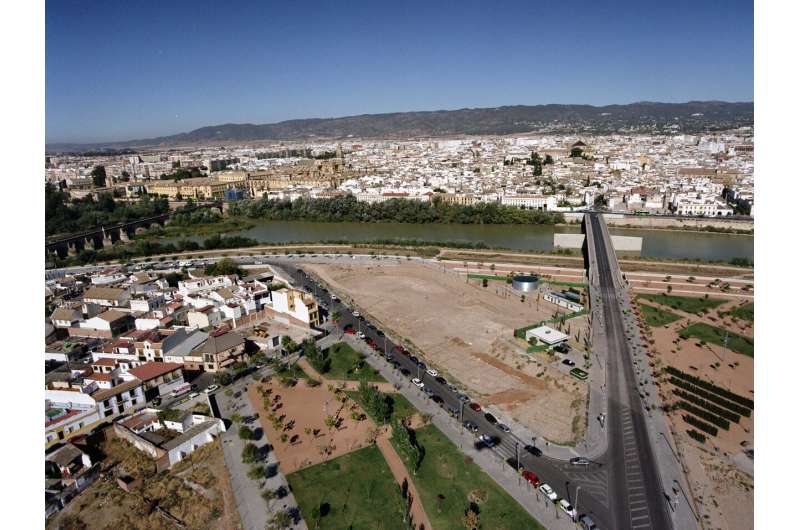June 23, 2020 report
Study of glass fragments in Cordoba provide a glimpse of the origins of lead glassmaking in Spain

A team of researchers affiliated with several institutions in France and one in Spain has learned more about the origins of lead glassmaking in Spain. In their paper published in Proceedings of the National Academy of Sciences, the group describes their study of glass fragments found at a dig site in Cordoba, Spain, and what they learned about them.
In 711, Muslim invaders arrived on the Iberian Peninsula, and after seven years of effort, managed to conquer its entirety—thereafter, the peninsula became part of the great Muslim civilizations, with its capital, the Umayyad caliphate of Cordovain. Muslim rule continued on the peninsula until 1492. In this new effort, the researchers looked into the origins of lead glass on the Iberian Peninsula and in Spain in particular. They note that prior research has shown that during the early period of the Muslim occupation, glass in Spain was imported from Egypt and the Levantine coast, and it was made by mixing and heating sand and mineral soda.
The work involved analyzing glass fragments excavated from the Rabad of Šaqunda dig site in Cordoba. In their study, they sought to both date the glass fragments and to isolate their origins by matching them with glass fragments found in other locations. To that end, they used high-resolution laser ablation inductively coupled plasma mass spectrometry along with lead isotope analysis. In so doing, they found that the ages of the glass fragments ranged from the mid-eighth century, to the first part of the ninth century. Data from the analysis showed that the earliest fragments were from glass objects that had been imported from Egypt and the Levantine coast. Later samples showed that the people using the glass objects had begun to recycle them—evidence of glass shortages due to reduced importation. Fragments made more recently were found to have been made locally and contained high levels of lead.
According to the researchers, the findings indicate that lead glass production got its start in Spain because it predates lead based glass made in other parts of the world and later imported to the Iberian Peninsula.
More information: Nadine Schibille et al. Ex novo development of lead glassmaking in early Umayyad Spain, Proceedings of the National Academy of Sciences (2020). DOI: 10.1073/pnas.2003440117
Journal information: Proceedings of the National Academy of Sciences
© 2020 Science X Network





















